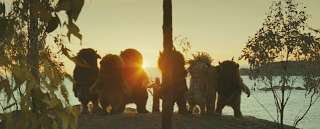Saw VI
Directed by Kevin Greutert
Zero Stars
With the second in the series, however, came the formula, and I found myself suddenly enthusiastic about the inevitable franchise’s comical ineptitude. My friends and I would have bad scary movie nights, of which “Saw II” and “Saw III” became staple finales, following the likes of “Mosquitoman”, “Stay Alive”, and “Santa’s Slay”. Hilarity always ensued.
But somewhere during the fourth installment the joke grew old, and I began to realize that what I had always been laughing at were the people who reveled in this tripe, the people who were systematically blown away by the exact same plot line on repeat, the people who confused fear with their gag reflex, the people who just plain got their kicks out of people being mutilated.
I sat through a sold out weekend opening of “Saw V” last year offended by this country’s reprehensibly bad taste. The crowed whooped and hollered and clapped and cheered. They thought they were watching something shocking, something provocative and clever. That anyone could look at the “Saw” franchise and see that, let alone enough people to make the series an annual chart topper, shows what a decrepit state this nation’s culture is in.
Of this year’s “Saw VI” I can describe my experience only as catatonic, not quite asleep and not quite alive, watching the movie as though I were waiting for it to catch up with me. “Yes, yes, I already know this,” I found myself thinking. “This happens in every movie. No need to present it as some kind of mammoth reveal.”
The theater this year, which promisingly was only modestly full on opening night, erupted in applause after a young woman chopped her own arm off. I shook my head. This is why they came. This is what they wanted to see. They’ve proven that with their vocal enthusiasm. The masochism in this society is off the charts. This is a problem.
The story of “Saw VI” proceeds as it usually does, loaded with cheap little mysteries, the most tantalizing of which was why on earth anyone would care. Of this film I will not provide any explicit spoilers, but I will point out that in every “Saw” sequel up until now, the main character has died, always only moments after it is revealed that their ‘game’ had one unforeseen phase remaining. Oops, my mistake. Looks like that was a spoiler after all.
I say this of course, because there are scores of people out there who still insist they go to the “Saw” movies for the story, and I have to wonder what the hell they’re talking about. People who are excited by the storylines in the “Saw” series, I would modestly propose, do not have a very good idea of what constitutes a quality “story”. I would recommend that they try films like “Diabolique”, “Psycho”, or “Rosemary’s Baby” if they wish to meld their horror fetish with inspired storytelling.
I am sure that there will be a “Saw VII”, and I am sure that I will see it. The experience will continue to evolve. However, I doubt very much that I will see fit to give a higher rating to next year’s installment than I have given any of these sequels, which has always been the lowest rating available. Why I continue to see these films I cannot say for sure. Perhaps my own level of masochism is equally distressing.
Rollan Schott
October 29, 2009
Originally Featured in the Daily Nebraskan







